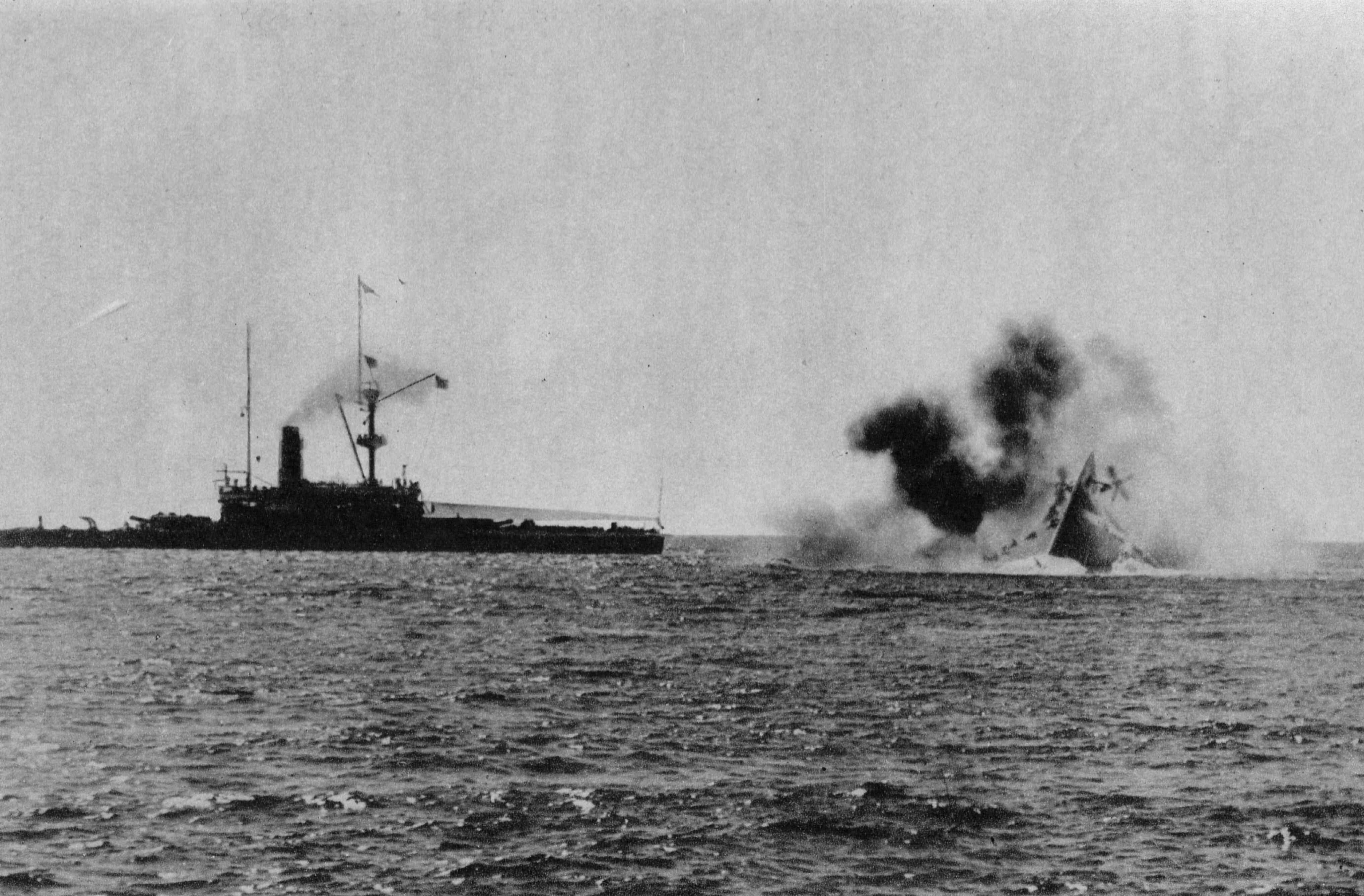|
Home Fleet
The Home Fleet was a fleet of the Royal Navy that operated from the United Kingdom's territorial waters from 1902 with intervals until 1967. In 1967, it was merged with the Mediterranean Fleet creating the new Western Fleet. Before the First World War, it consisted of the four Port Guard ships. In 1905 it was disestablished, and from 1905 to 1907 remaining ships at a lesser state of readiness were split into the reserve divisions ( Devonport Division, Nore Division, and Portsmouth Division). During the First World War, it comprised some of the older ships of the Royal Navy. During the Second World War, it was the Royal Navy's main battle force in European waters. Pre-First World War In the first years of the 20th century, the Royal Navy had four 'Port Guard' ships, stationed in the major naval bases, partially to act as flagships for the admirals commanding at those ports. These vessels appear to have been stationed at the Nore, Portsmouth, and Plymouth, as well as on ... [...More Info...] [...Related Items...] OR: [Wikipedia] [Google] [Baidu] |
2nd Division (Royal Navy)
The 2nd Division was a naval formation (military), formation of the Home Fleet, British Home Fleet it was formed before World War I, First World War in March 1909 until May 1912. History In March 1909 following a re-organisation of the British Fleet the Channel Fleet was absorbed by the Home Fleet, while the former Channel Fleet became the Home Fleet's first and second divisions. These new divisions was mad up of an 8-12 ship battle squadron that included either dreadnought battleships or pre-dreadnought battleships all remaining components of the former Home Fleet as it then stood became the third and fourth divisions that was a single command under a vice-admiral. The third and fourth division was assigned to major home commands as a reserve force. The 2nd Battle Squadron of the 2nd Division contained 10 to 12 older battleships, the 2nd Cruiser Squadron was formed using armored cruisers whilst the 2nd Destroyer Flotilla had a total of 4 scout cruiser leaders assigned to during ... [...More Info...] [...Related Items...] OR: [Wikipedia] [Google] [Baidu] |
HMS Neptune (1909)
HMS ''Neptune'' was a dreadnought battleship built for the Royal Navy in the first decade of the 20th century, the sole ship of her class. She was the first British battleship to be built with superfiring guns. Shortly after her completion in 1911, she carried out trials of an experimental fire-control director and then became the flagship of the Home Fleet. ''Neptune'' became a private ship in early 1914 and was assigned to the 1st Battle Squadron. The ship became part of the Grand Fleet when it was formed shortly after the beginning of the First World War in August 1914. Aside from participating in the Battle of Jutland in May 1916, and the inconclusive action of 19 August several months later, her service during the war generally consisted of routine patrols and training in the North Sea. ''Neptune'' was deemed obsolete after the war and was reduced to reserve before being sold for scrap in 1922 and subsequently broken up. Background and description The launch of in ... [...More Info...] [...Related Items...] OR: [Wikipedia] [Google] [Baidu] |
1st Division (Royal Navy)
The 1st Division was a formation of the Home Fleet of the Royal Navy. It briefly existed before the First World War from 1909 to 1912. History In March 1909 following a Navy re-organisation, the Home Fleet absorbed the Channel Fleet, which became its First and Second divisions. Each division consisted of A battle squadron that had eight ships. This was essentially a reserve force allocated to major home commands.Friedman.p.118. The new Dreadnought class battleships were allocated to the 1st Battle Squadron - 1st Division, Home Fleet. The Royal Navy's Battle Cruisers were posted to the 1st Cruiser Squadron. The Atlantic Fleet managed to survive the organisational changes. The first division existed until 1912 when it re-styled 1st Battle Squadron The 1st Battle Squadron was a naval squadron of the British Royal Navy consisting of battleships. The 1st Battle Squadron was initially part of the Royal Navy's Grand Fleet. After World War I the Grand Fleet was reverted to its or ... [...More Info...] [...Related Items...] OR: [Wikipedia] [Google] [Baidu] |
Gerard Noel (Royal Navy Officer)
Admiral of the Fleet Sir Gerard Henry Uctred Noel, (5 March 1845 – 23 May 1918) was a Royal Navy officer. As a junior officer he commanded a naval brigade which took part in the capture of Kumasi in February 1874 during the Second Anglo-Ashanti War. Noel went on to be Second-in-Command of the Mediterranean Fleet: during this tour, following the murder of the British vice-consul in Heraklion and an attack on the Customs House there, Noel landed a force in Crete to court-martial the terrorists and generally restore order. After that he became Admiral Superintendent of Naval Reserves and was given the additional responsibility of Commander-in-Chief, Home Fleet. He then became Commander-in-Chief, China Station: at the time relations between the United Kingdom and Russia were strained as the United Kingdom expressed its considerable dissatisfaction in relation to Russian aggression at the start of the Russo-Japanese War. His last appointment was as Commander-in-Chief, The Nore. ... [...More Info...] [...Related Items...] OR: [Wikipedia] [Google] [Baidu] |

